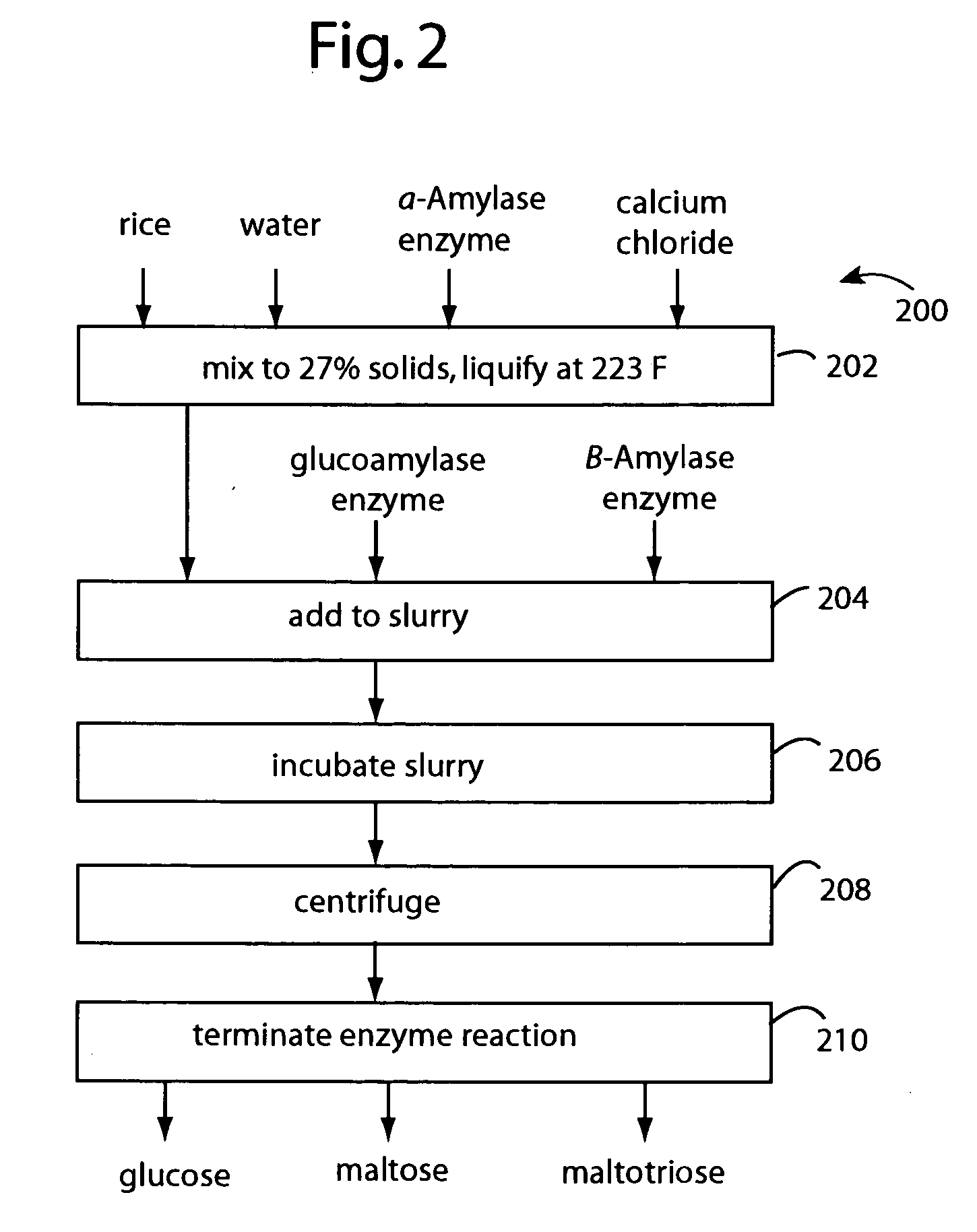High-temperature enzyme starch-to-sugar conversion
a technology of starch-to-sugar conversion and high-temperature enzymes, which is applied in the field of high-temperature enzyme starch-to-sugar conversion, can solve the problem that the breakage of the smallest glucose subunit is actually undesirabl
- Summary
- Abstract
- Description
- Claims
- Application Information
AI Technical Summary
Benefits of technology
Problems solved by technology
Method used
Image
Examples
Embodiment Construction
[0025]FIG. 1 illustrates a starch-to-sugar conversion embodiment of the present invention, referred to herein by the general reference numeral 100. As a general rule, enzyme activity doubles for every 10° C. rise in temperature. That is up until the point the high temperature denatures the enzyme. Conventional alpha-amylase has optimal enzyme activity around 155°-158° F. Novozymes' TERMAMYL is a liquid enzyme preparation of a heat-stable alpha-amylase produced by a strain of Bacillus licheniformis. (Novozymes A / S, Krogshoejvej 36, 2880 Bagsvaerd, Denmark.) TERMAMYL is marketed for use in the starch industry for the continuous liquefaction of starch at temperatures up to 105° C.-110° C. In the sugar industry, TERMAMYL is marketed to break down the starch present in cane juice.
[0026] Embodiments of the present invention therefore use high temperature enzymes to liquefy the starch quickly. The starch-to-sugar conversion method 100 comprises a step 102 for mixing together a water, a st...
PUM
| Property | Measurement | Unit |
|---|---|---|
| time | aaaaa | aaaaa |
| processing time | aaaaa | aaaaa |
| temperature | aaaaa | aaaaa |
Abstract
Description
Claims
Application Information
 Login to View More
Login to View More - R&D
- Intellectual Property
- Life Sciences
- Materials
- Tech Scout
- Unparalleled Data Quality
- Higher Quality Content
- 60% Fewer Hallucinations
Browse by: Latest US Patents, China's latest patents, Technical Efficacy Thesaurus, Application Domain, Technology Topic, Popular Technical Reports.
© 2025 PatSnap. All rights reserved.Legal|Privacy policy|Modern Slavery Act Transparency Statement|Sitemap|About US| Contact US: help@patsnap.com


